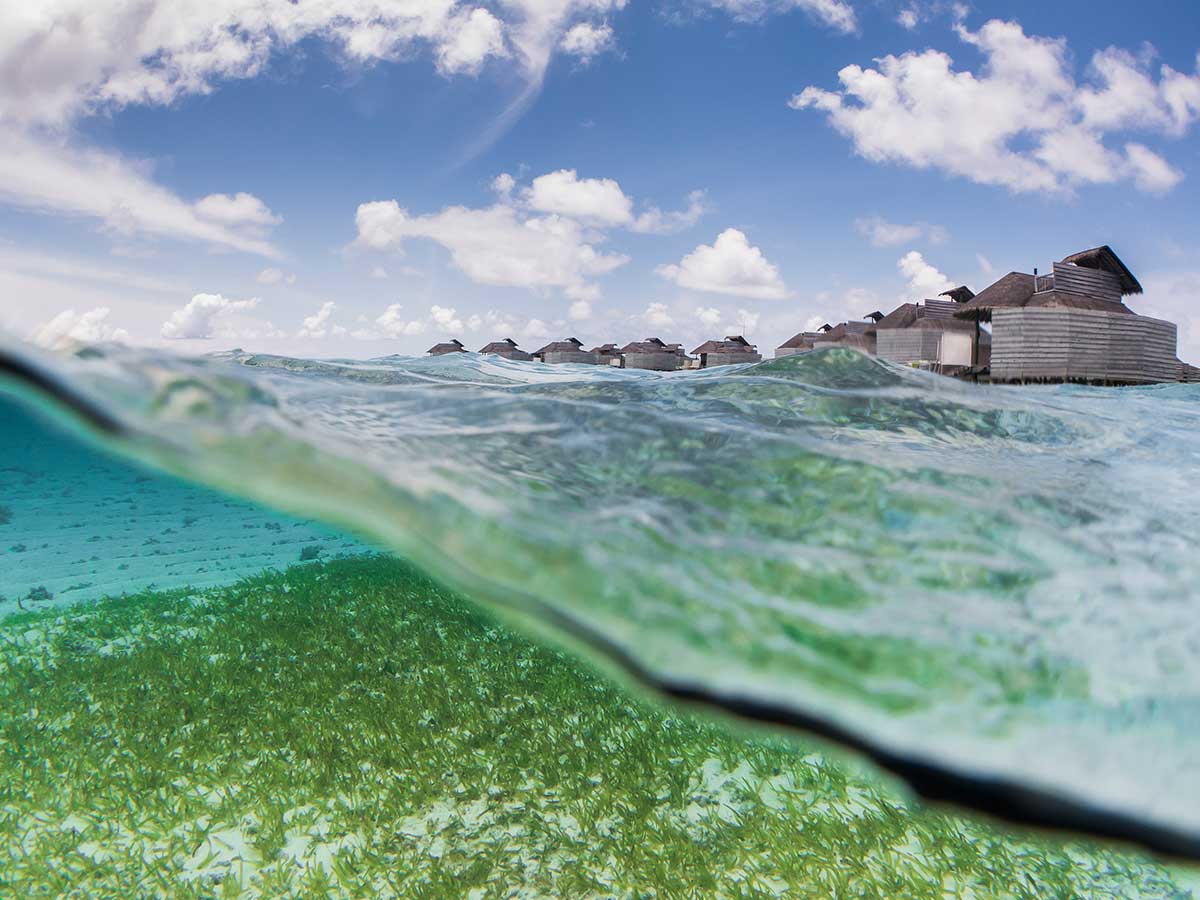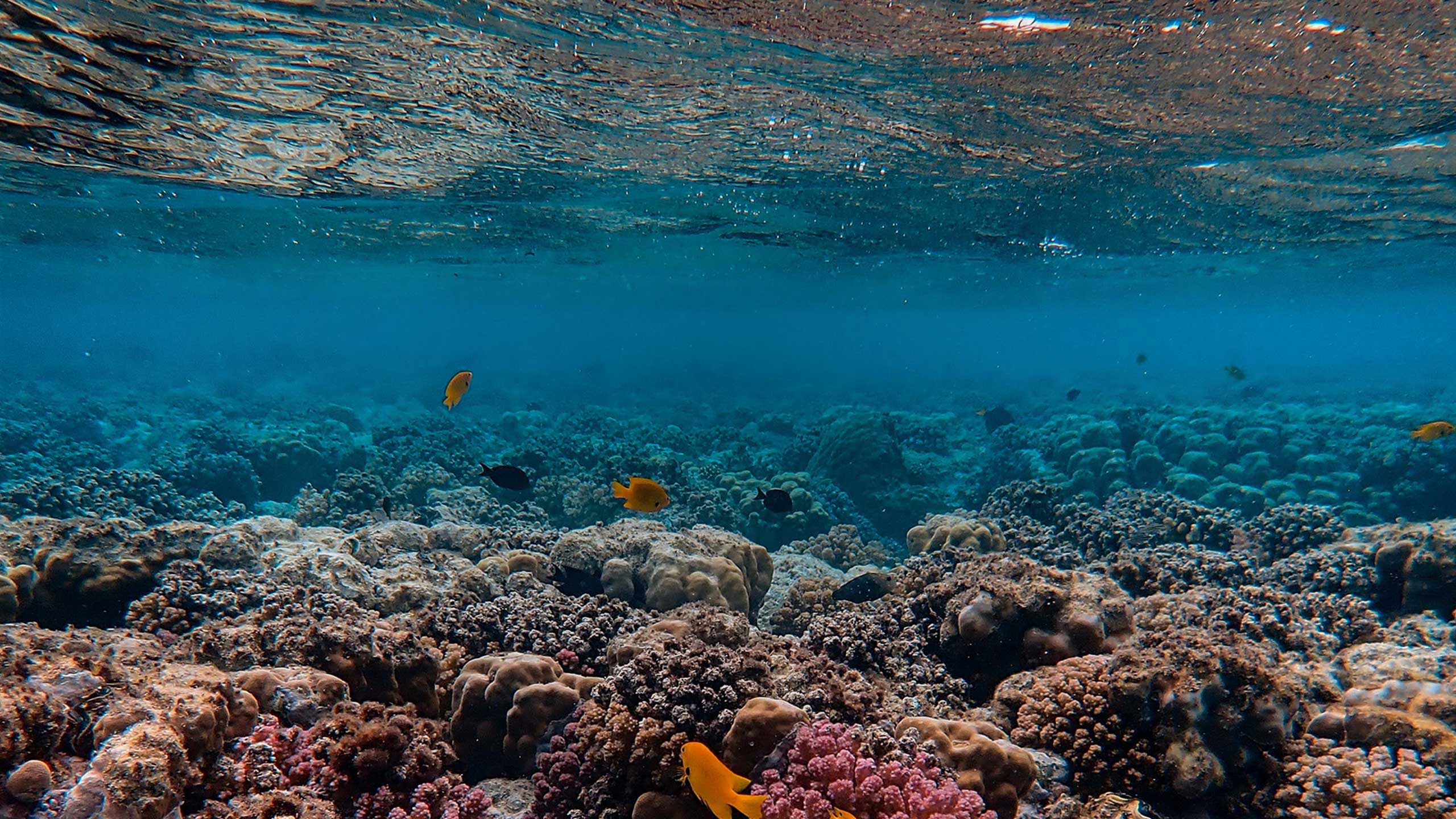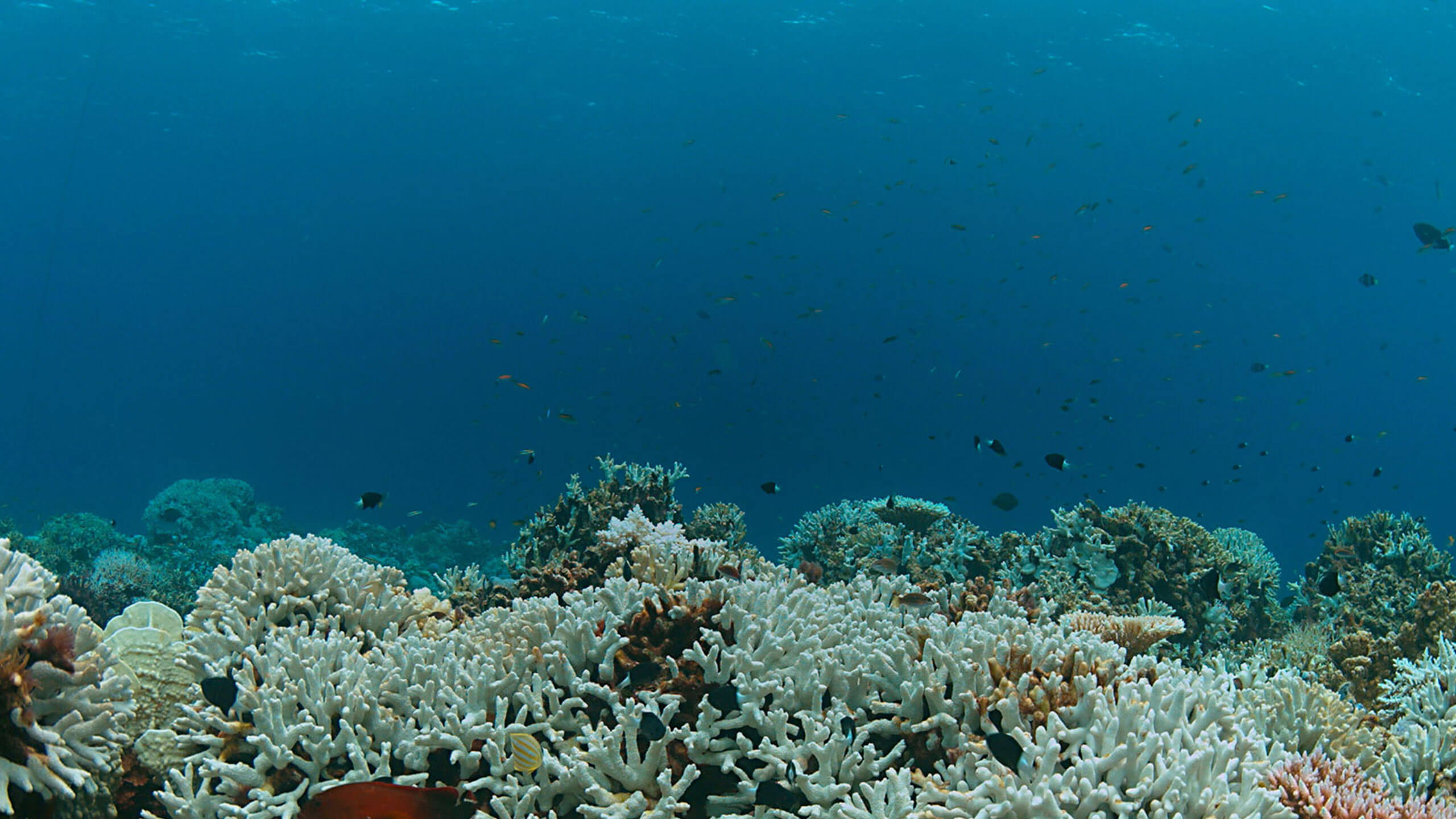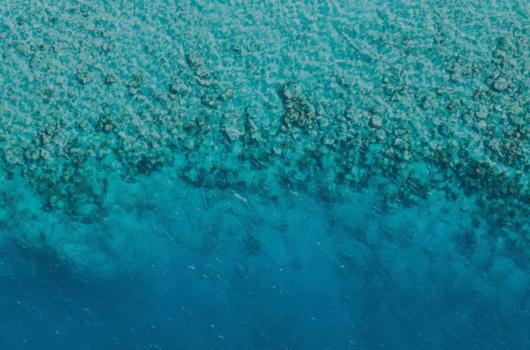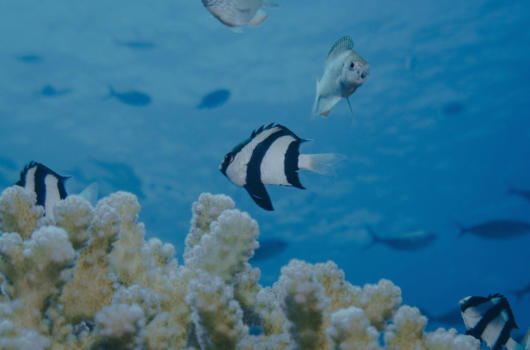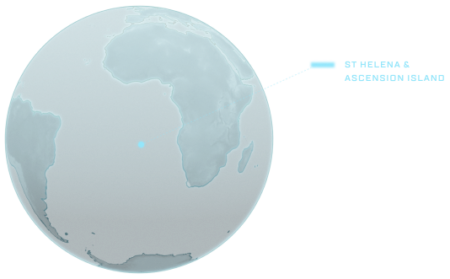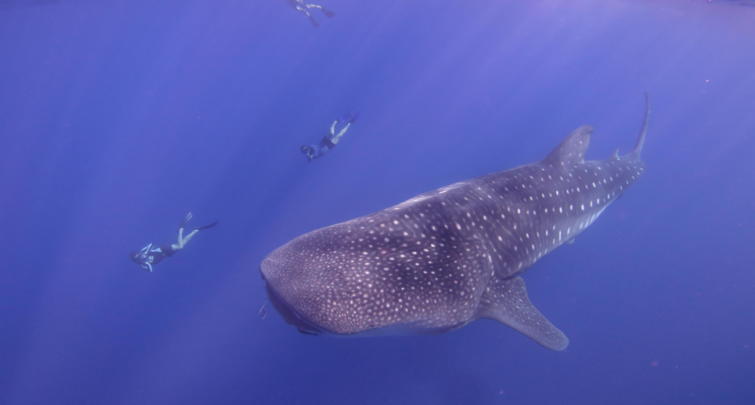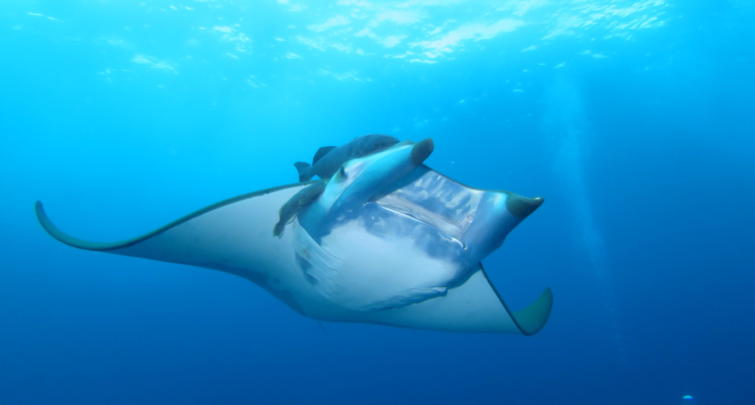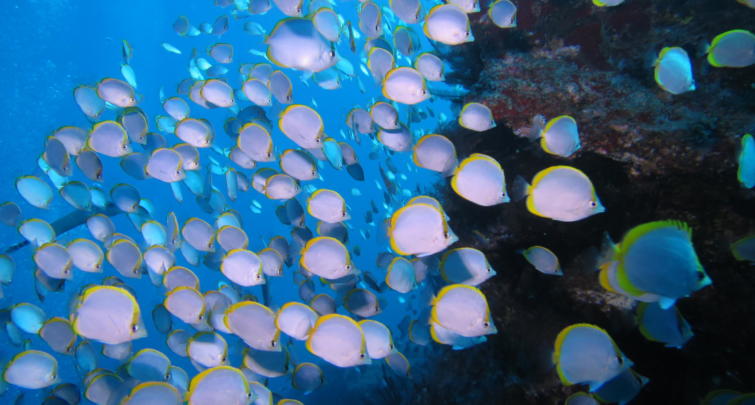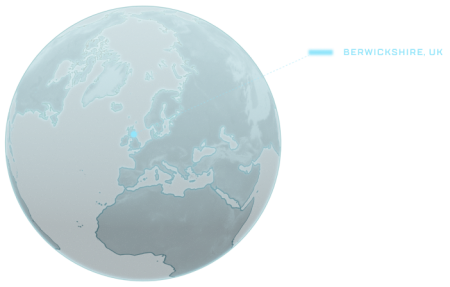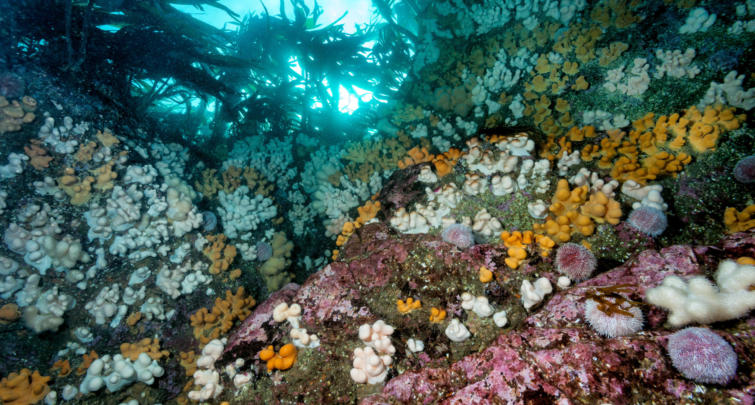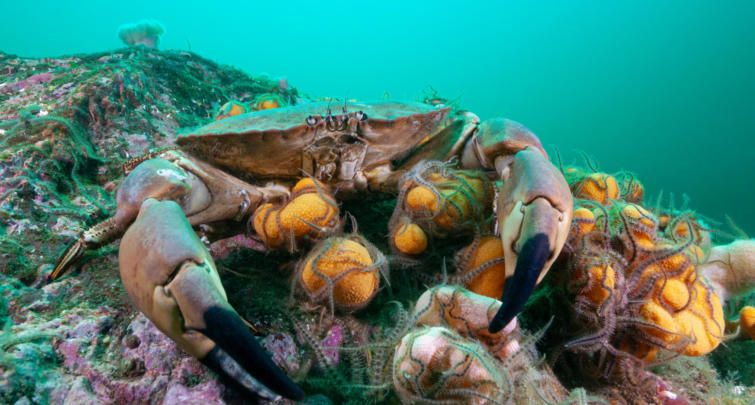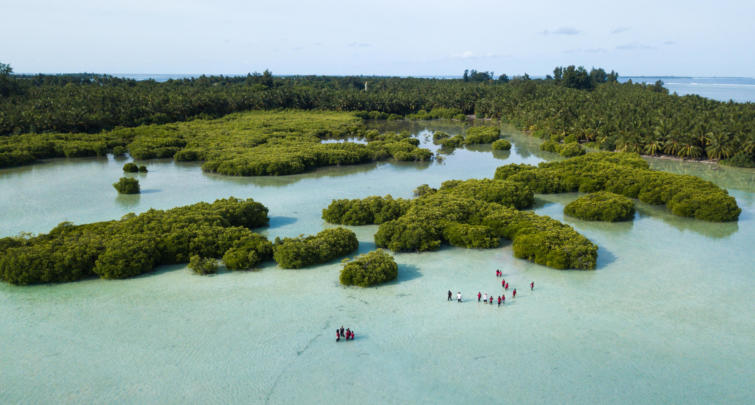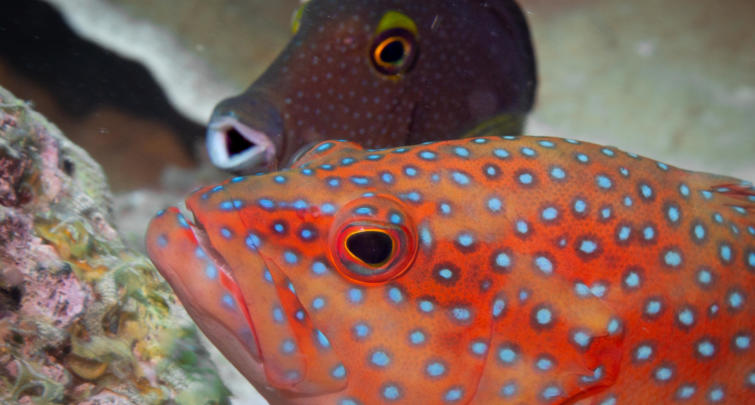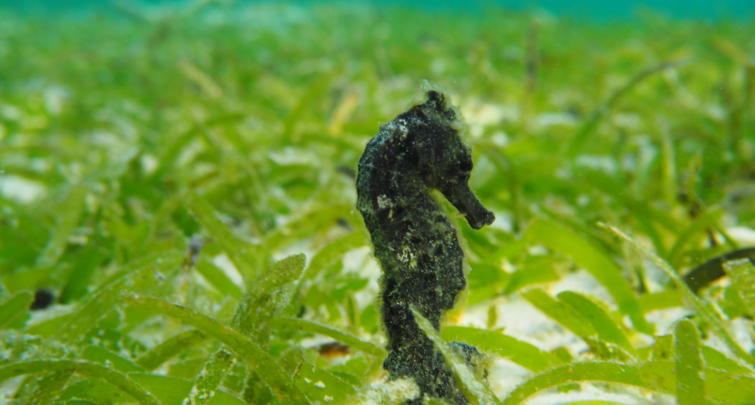Mangroves connect the land to our ocean
A Journey by Blue Marine Foundation
Rainforests of the sea
We use audio to enhance your experience. Coastal ecosystems teeming with marine life.
Mangrove forests, tidal marshes and seagrass meadows make up these underwater forests, known as ‘Blue Carbon Habitats’.
What is ‘Blue Carbon’?
Just like forests on land, these coastal wetlands and marine habitats absorb carbon dioxide and trap it in the soil below for thousands of years. This is important because too much CO2 in our atmosphere traps heat and drives climate change. ‘Blue carbon’ is what we call the carbon captured and locked away by these ocean habitats.
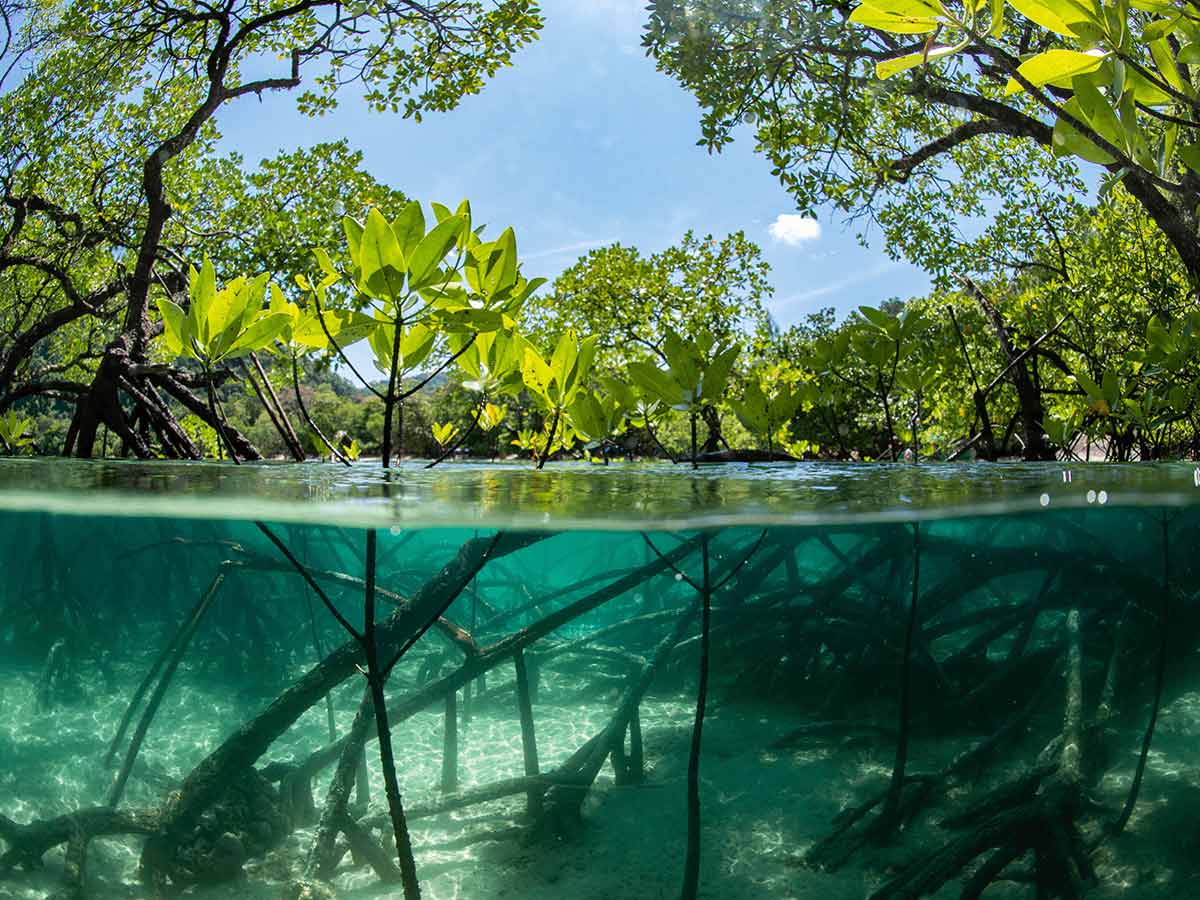
Here's a fact for you...
Some seagrass meadows can bury carbon 35x faster than the same area of rainforest.
These Ecosystems are under threat.
Blue carbon habitats are threatened by coastal development, unsustainable fishing, climate change, deforestation and pollution.
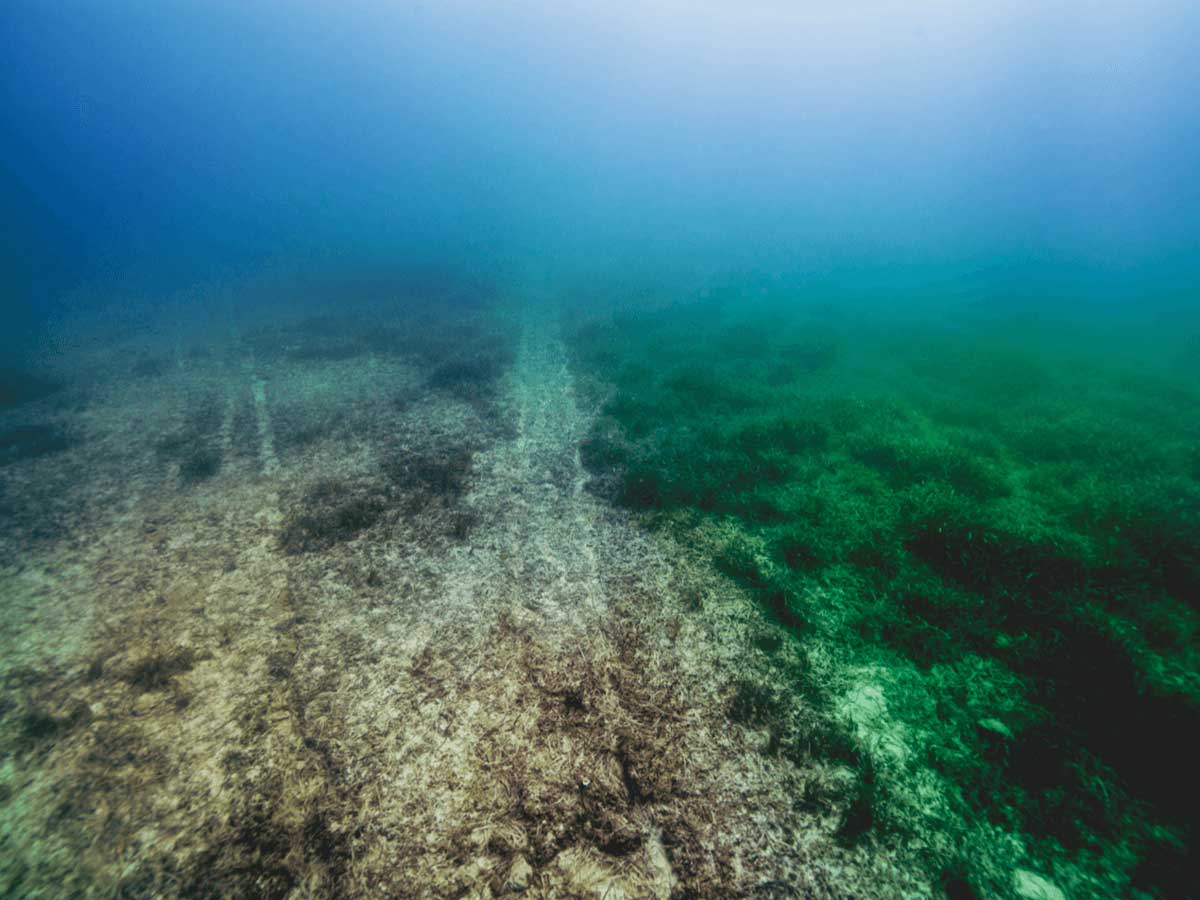
Their destruction releases stored carbon back into the ocean and atmosphere, speeding up climate change.
We must act now or risk losing more of these valuable ecosystems.
See if you can get this one right...
How long can coastal wetland habitats store carbon for?
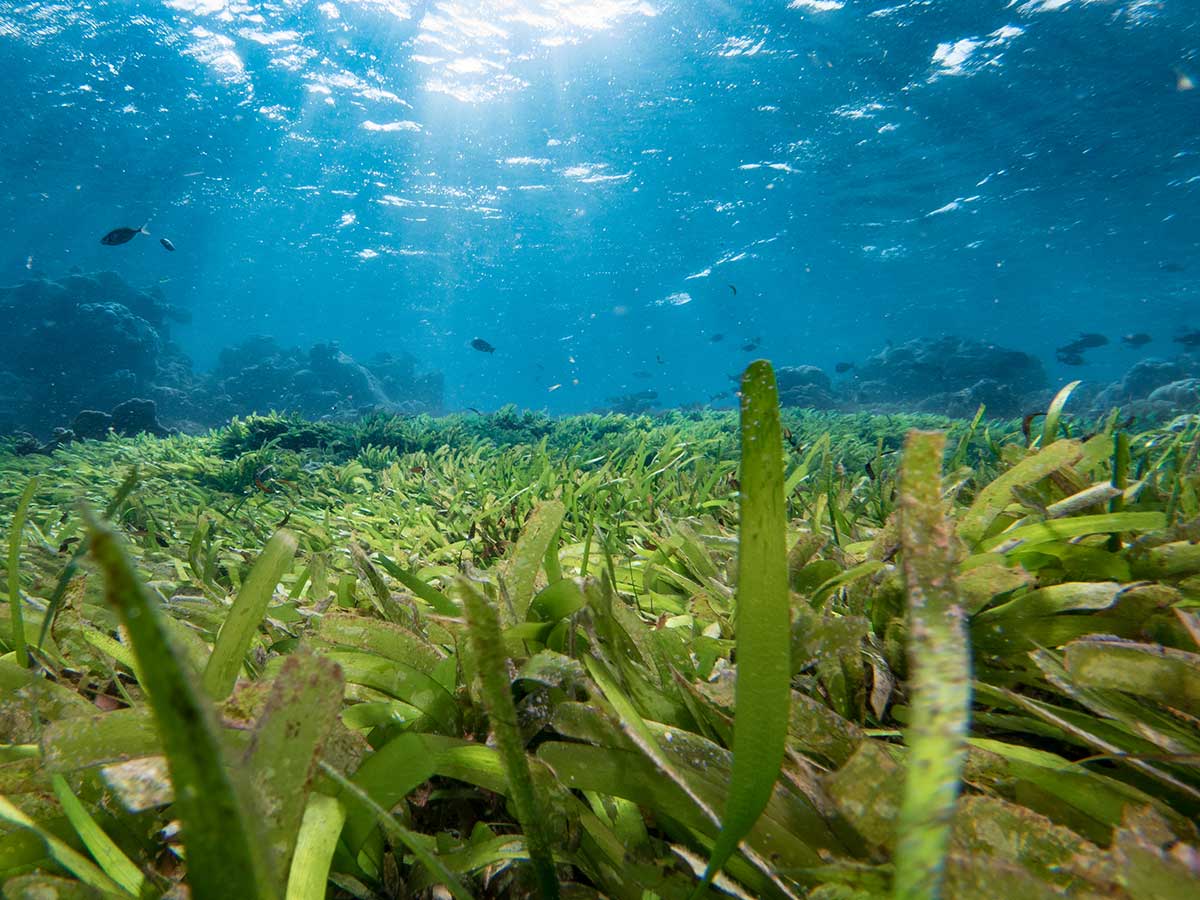
A haven for marine life
Coral reefs are often found near blue carbon habitats - they support at least a quarter of all marine species on earth.
Blue Marine Foundation is working to
Protect our future
In the Maldives, Blue Marine is working to increase the resilience of coral reef ecosystems to climate change. We do this by improving marine protection and promoting sustainable forms of tourism and small scale fishing
Project Spotlight
Take a deeper dive into how Blue Marine is working to protect reefs, blue carbon habitats and the marine life that call them home.
The Ocean's
Web of Life
Dive In
Protecting the
Underwater World
Dive In
Just 100 yards of mangroves can reduce wave height by up to 66%, which helps reduce erosion and flood risk.
That’s about the size of a football pitch!
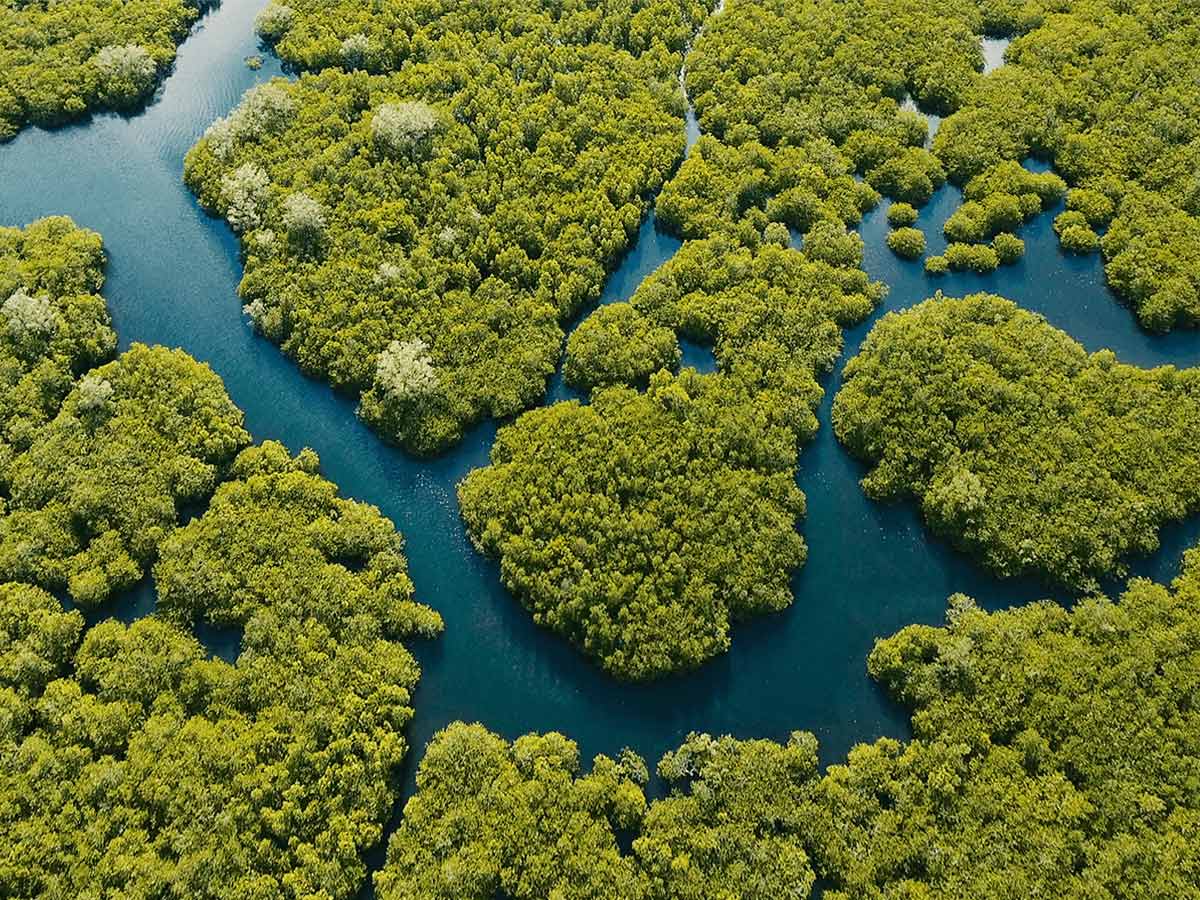
See if you can get this one right...
Salt marshes are shrinking! What’s causing this?
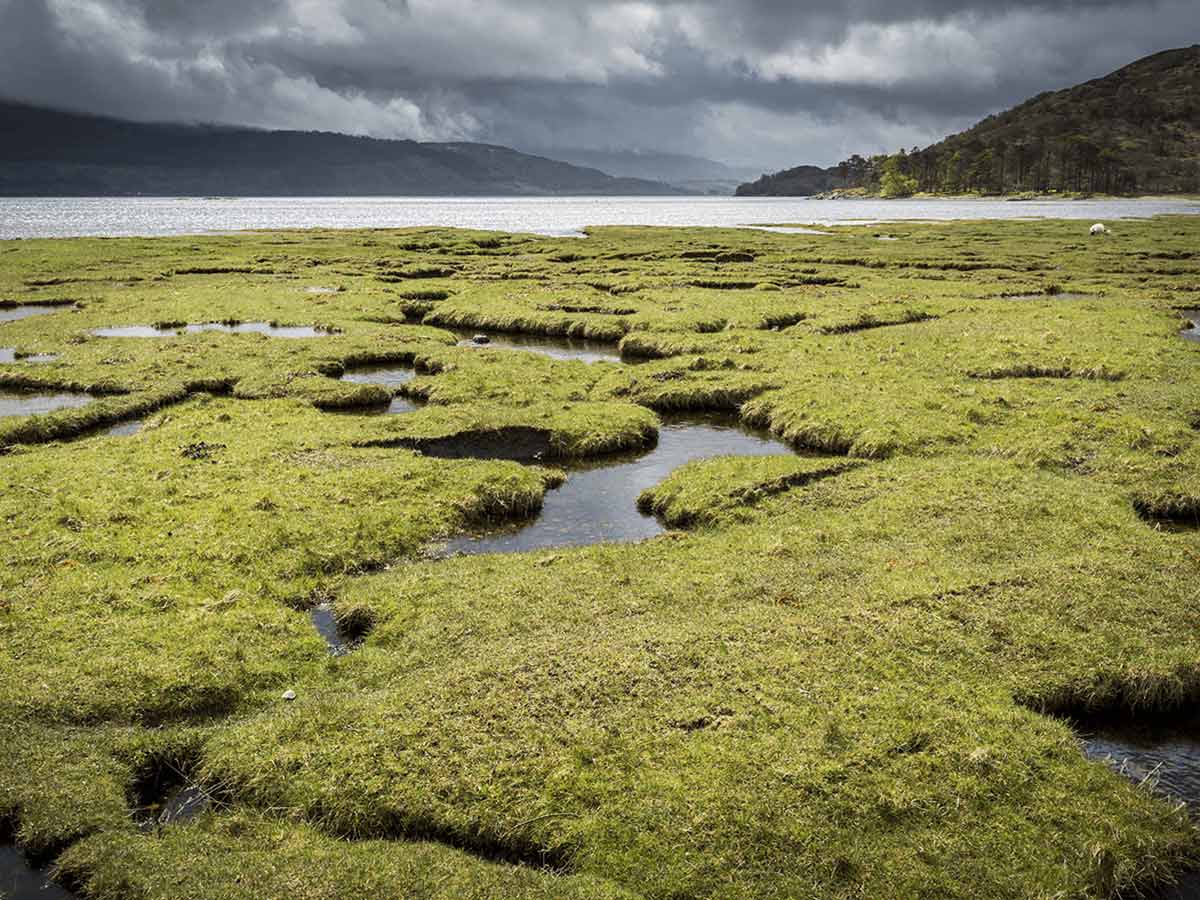
See if you can get this one right...
Seagrass needs our help. Guess how much we lose?
